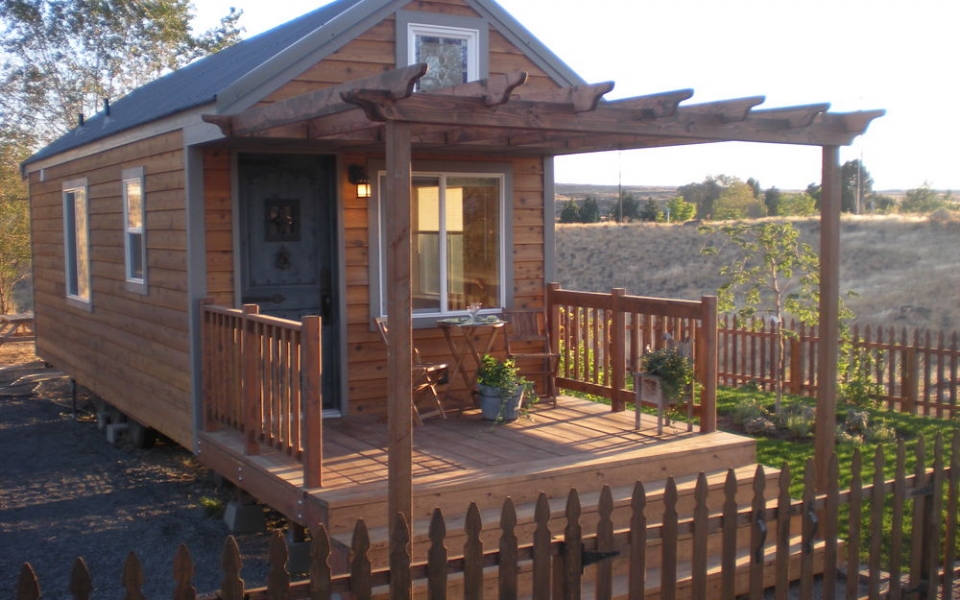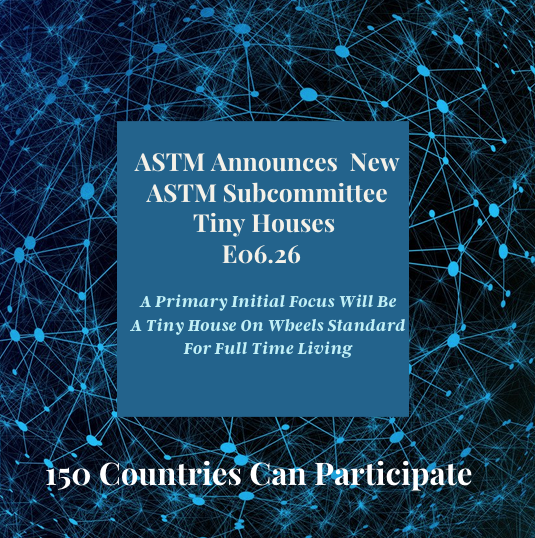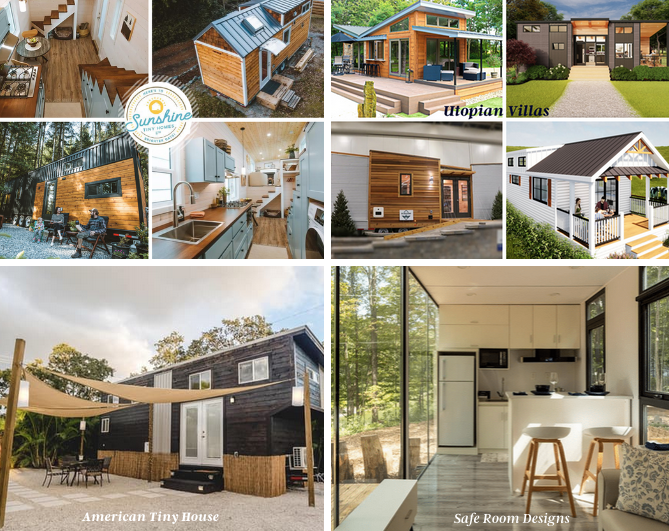The Root Cause Of Why Tiny Houses On Wheels Are Illegal
The root cause of why tiny houses on wheels have not been allowed in most jurisdictions and are considered illegal is because they are mainly built to recreational vehicle ( RV) standards. RVs are built for temporary use and are not considered housing. This contributes to a lack of financing and zoning.
Waiting For The Other Shoe To Drop
Because we do not have a standard, we are at the mercy of the confusion with the building departments or government officials such as when Oregon stopped titling park models and tiny houses for 2 years which caused an 8 million dollar loss of potential revenue or the fiasco in Maine a few years ago. We will always be waiting for the other shoe to drop until we have our own standard.
We are constantly at the whim of different interpretations and misinformation that is constantly circulating with no accurate way to fact check what is being stated.
The tiny house industry has been invited to Washington DC, to innovative housing summits, and there are municipalities that are spending years in discussion regarding rule-making for tiny houses, though we come back empty-handed. The tiny house industry is a worldwide grassroots movement of passionate advocates, builders, and tiny house dwellers from all over the world that are fighting for the acceptance and the allowance of tiny houses as a viable housing solution.
Finally, we have a real solution.

ASTM Annouces New Standards Subcommittee: Tiny Houses
“A tiny house is a marketing term, and at this time there is no official definition, classification, or statutory construction method applying to tiny houses on wheels,” says ASTM International member Janet Thome, founder and president of Tiny House Alliance USA. “The lack of uniform industry standards has sparked court cases, titling issues, unsafe building practices, the lack of financing and zoning, and a global debate: is a tiny house on wheels a building or a vehicle?”
Thome notes that the subcommittee also intends to address residential health and safety requirements, road safety regulations, and foundation requirements involved in full-time living in tiny houses on wheels. It has currently drawn international expertise from end users, builders, legislators, building officials, and advocates, from North America, Australia, Europe and South America, and is welcoming further participation.
ASTM welcomes participation in the development of its standards. Anyone with knowledge of tiny houses is encouraged to contribute to the development of the subcommittee.
ASTM International Is One Of The Largest ANSI Accredited Standards Developers In The World
In the simplest of terms, ASTM provides a platform for the process and facilitates an open consensus process and everyone will be allowed to participate. No one can be left out . Having more money, or more skin in the game will not give you an edge over this process. The process is 90% consensus and will be cleansed of all personal interest or leaning in favor of one manufacturer or individual.
We must follow all ASTM procedures and the ANSI Essential Requirements For Due Process. Due process means that any party (organization, company, government agency, individual, etc.) with a direct and material interest has a right to participate by: a) expressing a position and its basis, b) having that position considered, and c) having the right to appeal. Due process allows for equity and fair play. The following constitute the minimum acceptable due process requirements for the development of consensus including:
1.1 Openness
Participation shall be open to all parties who are directly and materially interested in the activity in question. There shall be no undue financial barriers to participation. Voting membership on the consensus body shall not be conditional upon membership in any organization, nor unreasonably restricted on the basis of technical qualifications or other such requirements.
1.2 Lack of dominance
The standards development process shall not be dominated by any single interest category, individual or organization. Dominance means a position or exercise of dominant authority, leadership, or influence by reason of superior leverage, strength, or representation to the exclusion of fair and equitable consideration of other viewpoints.
1.3 Balance
The standards development process should have a balance of interests. Participants from diverse interest categories shall be sought with the objective of achieving balance. If a consensus body lacks balance in accordance with the historical criteria for balance, and no specific alternative formulation of balance was approved by the ANSI Executive Standards Council, outreach to achieve balance shall be undertaken.
1.4 Coordination and harmonization
Good faith efforts shall be made to resolve potential conflicts between and among existing American National Standards and candidate American National Standards.
1.5 Notification of standards development
Timely and adequate notice of standards development activity shall be announced in media suitable to demonstrate that a meaningful opportunity for participation, debate and deliberation by all directly and materially interested parties in a fair and equitable manner was provided.
1.6 Consideration of views and objections
Prompt consideration shall be given to the written views and objections of all participants, including those commenting on the PINS announcement or public comment listing in Standards Action.
1.7 Consensus Vote
Evidence of consensus in accordance with these requirements and the accredited procedures of the standards developer shall be documented.
1.8 Appeals
Written procedures of an ANSI-Accredited Standards Developer (ASD) shall contain an identifiable, realistic, and readily available appeals mechanism for the impartial handling of procedural appeals regarding any action or inaction. Procedural appeals include whether a technical issue was afforded due process.
1.9 Written procedures
Written procedures shall govern the methods used for standards development and shall be available to any directly and materially interested party.
1.10 Compliance with normative American National Standards policies and administrative procedures
All ANSI-Accredited Standards Developers (ASDs) are required to comply with the normative policies and administrative procedures established by the ANSI Executive Standards Council.
Learn More About ASTM International
Over 12,800 ASTM Standards operate globally. Defined and set by us, they improve the lives of millions every day. Combined with our innovative business services, they enhance performance and help everyone have confidence in the things they buy and use.

For $75 a year, or free for students, you can be a member of one of the world’s leading standards development organizations. Members help create and update standards while gaining knowledge, leadership skills, professional networks, and more.
Your benefits include a free print or online volume of standards, Standardization News magazine, access to meeting minutes and agendas, and more.

Welcome All Tiny House Stakeholders
Announcement from Frank Connell, ASTM Staff Manager Of E06-Performance of Buildings. Instructions on how to join.
Current Status Of The Tiny House Subcommittee
Following up on our discussion yesterday, and a few of your points raised below, please see the current status of Subcommittee E06.26 on Tiny Houses:
- Subcommittee E06.26 on Tiny Houses has been approved, and is currently active on the ASTM Website. The Subcommittee is now open for any interested parties to join the Subcommittee. Attached below is information on how to join ASTM as a Member, and how to join the Subcommittee if you are currently a member.
- ASTM Staff is currently working on developing (with your assistance – thank you) a Press Release on E06.26. This Press Release will be distributed over ASTM’s Social Channels.
- Along with the Press Release, ASTM Staff will also initiate a Membership Drive to inform both existing ASTM Technical Committees, as well as relevant stakeholder groups outside of ASTM, of the formation of this new Subcommittee. This should assist in generating participation from all interested parties, from a wide variety of Industry Sectors.
- Upon the Subcommittee gaining a critical mass of members, it is my intention to provide several New Member Orientation Sessions to the Members of E06.26. These Sessions will be an overview of the ASTM Process and allow for new members to ask questions regarding Balloting, Negative Votes, Committee Operations, etc.
Learn More: Join The New ASTM Subcommittee On Tiny Houses E06.26

